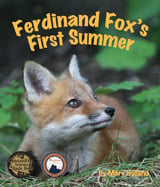Ruby-throated Hummingbird Nestling: Defecating Outside Nest

For the first day or two the mother hummingbird removes her chick’s fecal sacs, but soon thereafter the nestling is able to defecate outside of its nest, saving its mother considerable work and energy. You can anticipate this activity by noticing when the chick raises its rear end up over the nest to get in position.
Naturally Curious is supported by donations. If you choose to contribute, you may go to http://www.naturallycuriouswithmaryholland.wordpress.com and click on the yellow “donate” button.
Winter Adaptations of the Ruffed Grouse
 Ruffed Grouse have both behavioral (diving into the snow on cold nights) and physical strategies for dealing with the cold, snow and ice of New England winters. Three of the physical changes that take place in the fall are evident by looking closely at a grouse’s legs, feet and beak. The feathers on its legs grow thicker and further down towards its feet, to provide better insulation. Small comb-like growths of skin, called pectinations, develop along either side of each toe. These increase the surface area of a grouse’s foot, and serve as snowshoes in deep snow. They also help the grouse cling to icy branches while it quickly snips off poplar and other buds at either end of the day. And on its beak, feathers expand downward to cover its nostrils, slowing the cold air and giving it a chance to warm up before it is inhaled by the grouse.
Ruffed Grouse have both behavioral (diving into the snow on cold nights) and physical strategies for dealing with the cold, snow and ice of New England winters. Three of the physical changes that take place in the fall are evident by looking closely at a grouse’s legs, feet and beak. The feathers on its legs grow thicker and further down towards its feet, to provide better insulation. Small comb-like growths of skin, called pectinations, develop along either side of each toe. These increase the surface area of a grouse’s foot, and serve as snowshoes in deep snow. They also help the grouse cling to icy branches while it quickly snips off poplar and other buds at either end of the day. And on its beak, feathers expand downward to cover its nostrils, slowing the cold air and giving it a chance to warm up before it is inhaled by the grouse.
Naturally Curious is supported by donations. If you choose to contribute, you may go to http://www.naturallycuriouswithmaryholland.wordpress.com and click on the yellow “donate” button.


















What Other Naturally Curious People Are Saying